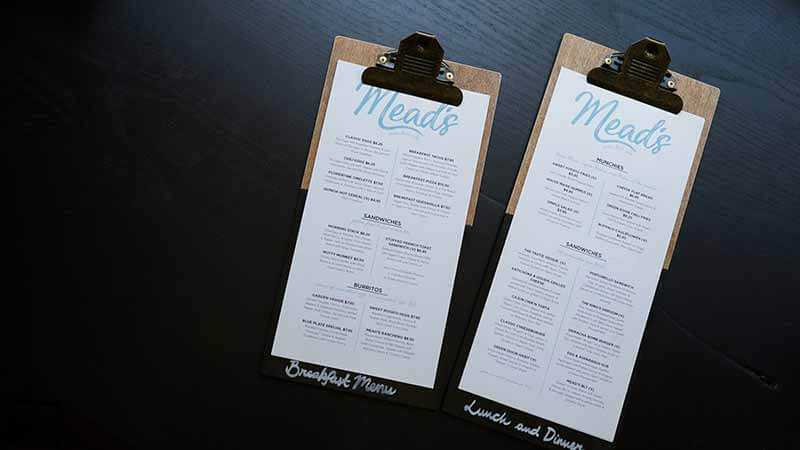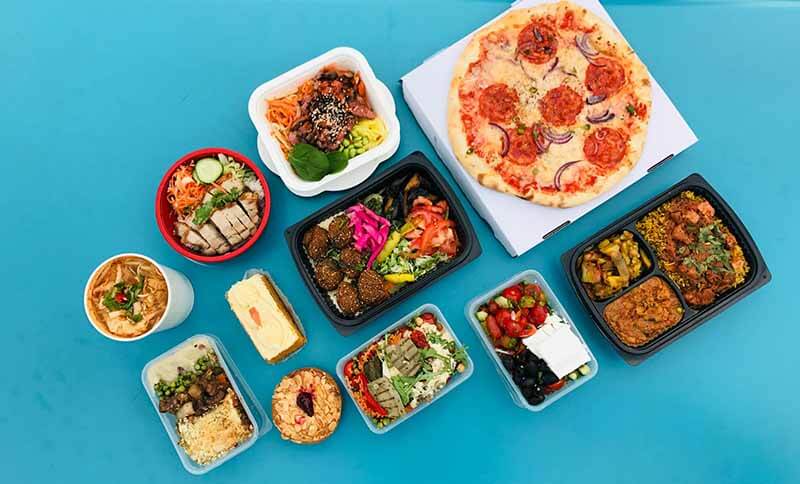Cost-Cutting Tips for Food Business Owners

After a day of work, people like to enjoy various delicious foods to end this busy day. Running a food business was a very good choice ten years ago since the competition was not fierce at that time. But now, with the gradual growth of Eastern and Western catering cultures, the competition is getting fiercer.
Profitability is the most important factor to support whether a food business can run in the long term, so cutting unnecessary operating costs is very important, but without compromising your service quality.
Analyze Current Operating Costs
The first step of cost-cutting should be to get a comprehensive understanding of all current costs and revenues. Check your financial records, including the invoices and receipts, and categorize all expenses, then you will know clearly how much cost in the labor, how much cost in the ingredients, how much cost in the utilities, how much cost in the equipment, etc.
You must conduct a thorough evaluation of your menu. Understand which menu item is most profitable and which menu item is least profitable, with these data and info, you will clearly make a decision on how to cut the cost on the menu.
Three Critical Factors You Have to Pay Attention on Optimize the Menu
Ingredient Costs: Evaluate the cost of each dish, find out the dishes with high-cost ingredients, and see if the selling price of this dish has enough profit. In addition, you can find more suppliers of the ingredients to get their quotation to compare and find more cost-effective alternatives to replace the ingredients.
Preparation Time: You also have to prepare time for each dish. Long-time preparation will increase the labor cost and customer wait times, this is not good if the dish can not provide enough profit for your business.
Popularity of Dishes: Analyze sales data and customer feedback, this will allow you to know what are the popular dishes. Take more time and cost to promote these dishes, they will help to increase your sales volume and profit.
Check Where the Cost is Higher Than Necessary
After a clear view of the expenses, you need to find the items where the costs seem higher than necessary and find the reason why the cost is so high. For example:
Ingredient Costs: Are there any opportunities, chances, or platforms to purchase the ingredient from cost-effective suppliers or even from the manufacturer?
Labor Costs: Is the restaurant’s management system strict? Are the employees’ skills adequate? Is the salary system reasonable? Is there a surplus of employees during the off-season?
Utilities: Look for more eco-friendly solutions to reduce water and electricity costs.
Inventory Management: Is your inventory being used efficiently? Is there any possibility of waste due to improper management?
Marketing: Nowadays, the Internet is very developed, and you can find more cost-effective marketing methods to get a better ROI.
Breaking down each cost not only helps you fully understand the operation of your restaurant, knowing which areas need to improve and which areas need to cut costs but also allows you to learn and benefit from using data to analyze the restaurant management.
Optimize Menu Structure
After the first analysis of the menu dishes, we can see whether we need to optimize the menu structure.
Cut Low-Profit Items: From the analyzing data, you can see clearly which dishes have low-profit margins, and which dishes have low sales, you can consider removing them from your menu. If the real situation does not allow you to remove them immediately, you can serve them as the occasional specials, not the regular dishes.
Promote High-Profit Dishes: Promote the high-profit dishes in your menu at the conspicuous location with attractive descriptions and eye-catching pictures. Train your employees to introduce these dishes to the consumers.
Create Meal Bundles and Combos: Create meal bundles or combos that include high-profit dishes, and make consumers feel that these dishes are more cost-effective.
Seasonal and Limited-Time Offerings: Introduce the seasonal or limited-time menus, consumers are willing to pay higher prices for the freshness of seasonal products.
Menu Engineering: Restaurant owners or management should learn menu engineering, this will guide the consumers to make the choice that benefits their bottom line.

Optimize Inventory Management
Whether inventory management is properly controlled is also one of the important items in restaurant costs. Let’s take a look:
Does Any Food Wastage Exist?
Food waste is a very common phenomenon in the catering industry, this will increase your canteen’s cost for both food itself and waste disposal costs.
To reduce food wastage, you need to train your employees to follow the rules of first in first out to make sure to consume old inventory before new inventory. If a restaurant has excess inventory, you can consider donating it to the welfare institution or making simple food and giving it to the homeless.
Inventory Optimization Tips
Regular Inventory Counts: Regularly checking the inventory will help to maintain accurate stock, make marks on new and old inventory, and prevent inventory theft.
Estimated Purchase Requirements: Based on the sales volume and seasonal trends, estimate the purchase requirements. This method allows you to avoid excess inventory.
Use Inventory Management Software: Use this software to follow up the inventory, and set the minimum inventory quantity. When the inventory quantity is lower than the set value, an automatic alarm will be issued.
Set Inventory Levels: This still needs to be estimated based on the sales volume and raw material arrival time in the past, allowing you to have enough stock to serve consumers without overstocking.
Effective Communication Among Staffs: Keeping effective communication between employees will align chef needs with ingredient inventory to prevent shortages or excess.
Ways to Get Better Ingredient Prices
Build Strong Relationships: Building strong relationships with your suppliers, showing your loyalty to them, and building long-term business relationships with them will lead to more favorable prices and terms.
Purchase in Bulk: Try your best to purchase in large quantities, this will lead to getting a better discount.
Seek Multiple Quotes: Don’t focus on only one supplier’s quotation, we suggest that you contact multiple suppliers and get multiple quotes to compare.
Review Contracts Regularly: Regularly review the contracts between you and your supplier, once you have the ability to increase quantity, negotiate contract terms with them.
Explore Local Sourcing: You can consider both local suppliers and remote suppliers. Local suppliers don’t have high costs on transportation, remote suppliers may be the original manufacturer.
Leverage Group Purchasing Organizations: Join GPOs to get better discounts and prices.
Optimize Energy and Utilities
In the food industry, the lighting, kitchen equipment, air conditioning, and heating system, all of these are a big expense. By saving the energies in an effective way, you can greatly reduce the cost of your restaurant.
Energy Saving Tips
Upgrade Lighting: Use LED light to replace the traditional light in your food establishment. LED light has the feature of low energy consumption and long service life.
Use Natural Light: During daytime business hours, you can open the curtains and let the natural light come into your establishment. Consumers will prefer the environment with natural light.
Install the Thermostat: The thermostat can control the temperature by setting, this could avoid energy waste by long time operation of the air conditioning.
Regularly Maintain Equipment: Long-time operation of kitchen equipment, air conditioners, refrigerators, ventilation systems, and other equipment will lead to performance degradation.
Optimize Kitchen Workflow: Well-organized kitchen workflow will effectively reduce equipment usage time and reduce overall energy consumption.
Unplug Idle Equipment: Train the employee, then the equipment is not in use and when they get off work, they need to unplug the idle equipment.

Optimize on Labor Cost
Labor cost is a challenge for every industry, including the food business. Recruiting and training an excellent employee is not a small cost for a business, retaining a skilled employee will also be a strain on your budget. So we have to find some strategies to optimize the workforce while maintaining great working efficiency.
How Can We Improve the Employee Productivity?
Training and Skill Development: Well-trained employees will improve their productivity and service quality.
Cross-Training: Train your employees not only for their positions but also for other roles in your restaurant. This could lead you to effectively deploy them to many positions when needed and minimize the hiring request.
Performance-Based Incentives: Motivate your team through performance, this could make your team member improve their productivity.
Utilize Technology: Using online order system, kitchen display system, takeaway platform system, etc to simplify employee work and manual error.
Encourage Open Communication: Valid suggestions from employees are very helpful in improving the restaurant’s work. So, creating an environment for employees to share their ideas and feedback is great for the restaurant’s improvement.
How to Arrange Staff During The Slow Period?
Avoiding excessive staff during the slow period is also very important for cost saving, so let us take a look at the strategy on how to arrange the staff during that period.
Analyze Historical Data: First, you need to check the historical sales data to see your passenger traffic and trends. This will help you to adjust the staff during the slow period and busy periods.
Adopt Flexible Scheduling: In the slow period, you can use the part-time or on-call staff. Allow your employee to adjust their work shifts when needed to ensure the employee coverage during working hours.
Implement Just-in-Time Staffing: Just-in-time staffing approach is a way you can schedule your staff based on real-time consumers, this method can avoid your restaurant overstaffing.
Monitor Labor Costs Regularly: Regularly monitor the labor cost and sales revenue, these data will help you to make timely adjustments on staffing.
Technology Integration
In the digital age, technology is very important for the food business. Although some system looks very expensive, still some other cost-effective solutions can help small to medium restaurants optimize their system, you can take a look.
Cloud-Based Software: Cloud-based software is normally affordable with minimum hardware investment. The system allows you to manage your business from anywhere through an internet connection.
Mobile Apps: Make an App for your restaurant, this could allow you to deal with the orders online, processing payment, and customer communication. Promote your apps and improve sales.
Social Media and Online Presence: Establish a page for your restaurant on social media to show your delicious food and service to a wide range of customers, this is a very cost-effective way to expand your business.
Customer Loyalty Programs: Reward repeat customers, giving discounts to new customers on your restaurant Apps, this could encourage customers to place repeat orders or spread your restaurant activity.
Optimize Tableware Price
Due to the diversity of services in the catering industry, different restaurants provide different tableware. We take the most basic tableware as an example. You can also consider these factors when you need to purchase other tableware.
You can consider using bagasse containers to replace the ceramic tableware. Using ceramic tableware, you need to hire an employee to wash the dish or buy the dishwasher, water and electricity bills are also costs.
Compostable Food Containers: Use compostable food containers to replace the dinner plate or can be used as the takeout container to support to-go service.
Bagasse Bowls: Use molded fiber bowls to replace rice bowls or compostable bowls with lids to support the restaurant to go service.
Compostable Plates: Use sugarcane plate to replace dinner plates and fruit plates. You can also customize the compostable plates with lids for to-go purposes.
Sugarcane Cups: Use sugarcane cups to replace the ceramic or glass mug.
Using these kinds of bagasse products to replace the reused tableware will help you to save labor costs, utility bills, and equipment costs. Bagasse products are also biodegradable and compostable, which is very friendly to the environment.

Cost-cutting is a very important part of running a successful food business! Comprehensively analyze the current status of the restaurant, list every detail, and then formulate a plan to optimize costs in every detail.

John Q
John Q is Eco March’s Product Manager. With 5 years of prior experience in the food industry after graduating from university, he has been an integral part of Eco March. He excels in creating and developing eco-friendly food packaging products with a keen focus on enhancing the consumer experience.


